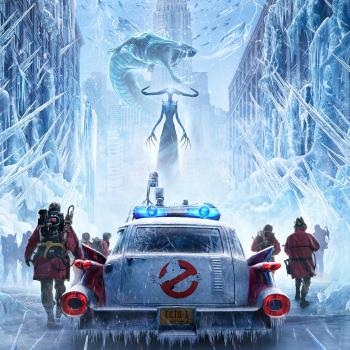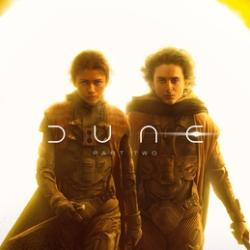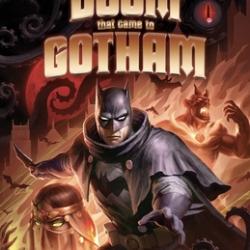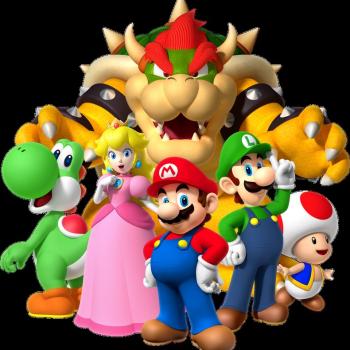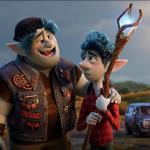 Review of Snow White, Directed by William Cottrell, et al
Review of Snow White, Directed by William Cottrell, et al
Having recently shown my kids, aged 4 and 3, Disney’s finest in Beauty and the Beast (1991, reviewed here), I thought it only fitting to go back and show them Disney’s original, Snow White and the Seven Dwarves (1937). Separated by more than a half-century, the two masterpieces of classical animation show how far Disney has come in the art of story-telling.
Snow White was the first widely-distributed feature-length animated movie. Ever since we’ve fallen into the curious habit of considering animation its own genre. It isn’t: genre is a type of story, like tragedy or comedy. Animation is a production technique, or the medium through which the story is told. Animated movies aren’t a separate genre, but a completely separate art form through which all kinds of stories can be told.
Snow White was the first to explore the possibilities of this new medium, which probably accounts for its place (#34) on AFI’s Top 100 list. The glory of any art is its ability to express uniquely, in a way other art forms cannot. Live-action film is a magnificent form because it involves and captures almost every other art form in it: music (the score), writing (screenplay), architecture, painting, and sculpture (set and production design), acting, photography, and more. What is the uniqueness of animated film? What can it express that live-action cannot?
In Snow White, the animals are characters. They flow, scurry, fly, and hop around Snow White and her friends; they tweet in tune, clean a house, and react to the human characters. The scenery is a character too: the trees reach out to grab Snow White as she runs through the forest. A bolt of lightning strikes at just the right time to thwart the evil witch. No live-action film could replicate these images.
In animation, the filmmakers have total control over every detail, because everything is artificial. With live-action, filmmakers have to deal with the real world, with the laws of physics, and with the randomness of weather. In animation, nothing is left to chance. That means animated films have almost infinite freedom to create worlds of staggering imagination and creative detail. If a picture is worth a thousand words, animated pictures can tell whole new kinds of stories.
Snow White is, for a movie made in 1937, beautiful, lively, and energetic. The woods, the cottage, the animals, the castle, and the mines are finely detailed. I was surprised at the beauty of one scene in which the dwarves are marching out of the mines and a waterfall gleams in the sunlight: the detail was breathtaking, especially when you realize it was all drawn by hand.
And that is one of the major draws of Disney’s animated movies: they’re an extended sequence of pretty pictures. Because the filmmaker has total control, every shot can be framed, staged, and drawn for maximal aesthetic impact. Freeze-frame any animated movie at any point, and you’re likely to have a pleasant drawing on your hands.
Pleasing pictures, in turn, make you feel good. It’s like walking through a well-lit museum full of nice drawings of pastoral scenery. You’re likely to come out the other end feeling relaxed, rested, and cheerful. Disney invented the art of putting those feelings down on paper, rolling them out at 24 frames per second, and selling you the result. (Disney left it to others to explore the darker potential of animation. See, for example, Barefoot Gen (1983), about the atomic bombing of Hiroshima).
On top of that, Disney adds catchy tunes (“Heigh-ho! Heigh-ho! It’s off to work we go….”) and fairy-tale stories. The latter, at least, seems well-matched to how Disney uses animation. The medium–with its fanciful, fictional worlds–seems predisposed to favor highly-stylized, impressionistic stories of high emotion, which is what fairy-tales are. Snow White set the template for this package that’s been followed for almost eighty years.
With all that said, now I have to confess that I am an awful person because I was bored watching Snow White. Nostalgia got me through the first twenty minutes. Reflecting on its historical value got me through the next twenty. But I still had forty minutes to go and my kids were antsy and not terribly interested. Almost half the movie takes place in a cottage. The movie spends an absurd amount of time showing the animals and dwarves cleaning the cottage, washing up, eating, and singing and dancing. The actual conflict between the evil queen and snow white is perfunctory and brief. The climax is rushed, and the witch is dispatched with a classicly terrible deus ex machina. The Prince is a one-dimensional piece of cardboard with two lines of dialogue and no motivation whatsoever to fall in love. The Huntsman was my favorite character.
The movie has some tidy lessons, like all fairy-tales, this one about the deceitful and corrupting power of beauty (see Ezekiel 27 for the Bible’s take on that). The relationship between Snow White and the dwarves is a dainty little picture of boys and girls fumblingly learning how to treat each other (each of the seven dwarves a reflection of one or another aspect of adolescent boy’s psychology, perhaps). And the movie rightly teaches young children not to murder innocent princesses, nor to cut out their hearts at the behest of evil queens. These are fine lessons. But Snow White is showing its age. It is too slow, too staid, and too syrupy. I was sad to discover that it no longer has the power to enchant either my kids, fresh from Nemo and WALL-e, or me.



